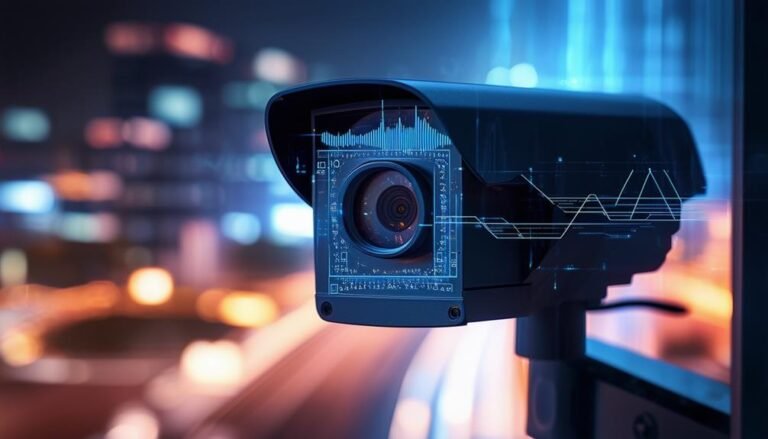To reset your Dahua NVR, start by ensuring it’s powered on and connected to a monitor. Log in to the main menu with your credentials; use password recovery if needed. Navigate to “Configuration,” then the “System” tab, and find the reset options. Confirm the action to restore default settings, and wait for the device to reboot. After resetting, check your network settings and re-add any cameras as needed. You’ll also want to set up user accounts with strong passwords. For more tips on reconfiguring and troubleshooting your setup, keep exploring.
Understanding Dahua NVR Models
When diving into the world of Dahua NVRs, it helps to sort through the various models available. Each model is designed to cater to different needs, so you’ll want to familiarize yourself with their key features. Whether you’re looking for a basic setup for your home or a more robust solution for a larger facility, there’s likely a Dahua NVR that fits the bill.
You’ll find models ranging from entry-level options that support a handful of cameras to advanced systems capable of managing dozens. Understanding the specifications is essential—think about the number of channels, resolution support, and storage capacity. You’ll also want to check if the model has features like remote access, smart analytics, or compatibility with other security devices.
Another aspect to evaluate is the user interface. Some NVRs offer intuitive controls that make setup and management a breeze, while others might require a bit more tech-savvy understanding. If you value freedom in managing your security system, opt for a model that allows for easy adjustments and customizations.
Lastly, don’t overlook the importance of firmware updates. Staying updated guarantees your system runs smoothly and securely, giving you peace of mind in your surveillance setup. By taking the time to understand the different Dahua NVR models, you’ll empower yourself to make informed decisions that suit your unique security needs. So, explore these options, and you’ll be well on your way to creating a reliable surveillance network.
Preparing for the Reset
Before you proceed with resetting your Dahua NVR, it’s important to take a few preparatory steps to guarantee a smooth process. A little preparation can save you time and frustration later on. You’ll want to make certain you’re fully aware of what you’re about to do and gather everything you’ll need. Here are three key points to take into account:
- Backup Your Data: Verify that any important footage or settings are backed up. Resetting the NVR will wipe out all your configurations and recordings, so it’s essential to save anything you might need later.
- Gather Necessary Tools: Have a screwdriver ready if your NVR model requires it for accessing certain components. You may also need a monitor or a connection cable, depending on how you plan to execute the reset.
- Understand the Implications: Be clear on what resetting entails. This process can restore factory settings, meaning you’ll lose customized settings, user accounts, and any saved data. Familiarize yourself with your original settings so you can reconfigure them later.
Step-by-Step Reset Process
To reset your Dahua NVR, follow these straightforward steps to assure a successful process. First, verify that your NVR is powered on and connected to a monitor. You’ll need to access the main menu, so grab your mouse and navigate to the login screen. Enter your credentials—if you’ve forgotten them, you might need to use the password recovery tool before proceeding.
Once logged in, locate the “Configuration” option in the main menu. Click on it, and then find the “System” tab. Under this section, you’ll see an option for “Restore to Default.” Selecting this will prompt a confirmation message. Don’t rush! Take a moment to double-check that you really want to erase all customized settings. If you’re sure, confirm the action.
After confirming, your NVR will begin the reset process. This may take a few minutes, so be patient. You’ll see the device rebooting, which is a good sign. When it’s back online, you should see the initial setup screen, indicating that your NVR has been reset successfully.
Lastly, remember that this reset will wipe all configurations, including network settings and user accounts. So, it’s crucial to have a plan in place for reconfiguring your settings once the reset is complete. Enjoy the newfound freedom of a fresh start with your Dahua NVR!
Reconfiguring Your NVR Settings
After resetting your Dahua NVR, the next crucial step is reconfiguring your settings to make sure it operates according to your needs. This process gives you the freedom to tailor your surveillance system to match your unique environment and preferences. Here are three key areas to focus on during reconfiguration:
- Network Settings: Confirm your NVR is connected to your network correctly. Enter the appropriate IP address, subnet mask, and gateway settings to allow remote access and seamless communication with your cameras.
- Camera Configuration: Add your cameras back to the NVR, specifying their IP addresses and settings. Take time to adjust each camera’s resolution, frame rate, and recording schedule, so you capture the footage that matters most.
- User Management: Set up user accounts and permissions. Create unique usernames and strong passwords to protect your system. Decide who gets access to what features, confirming that only trusted individuals can view or alter sensitive settings.
Once you’ve adjusted these settings, don’t forget to save your configurations. Your Dahua NVR should now be set up to meet your needs effectively. Regularly revisiting these configurations will help you stay in control of your security system, adapting it as needed to maintain that sense of freedom you value. Enjoy the peace of mind that comes with a well-configured NVR, tailored just for you.
Troubleshooting Common Issues
Troubleshooting common issues with your Dahua NVR can seem challenging, but with a systematic approach, you can quickly identify and resolve problems. Here’s a guide to help you navigate some typical scenarios that might crop up.
| Issue | Possible Solution |
|---|---|
| No video feed | Check camera connections and power supply. Restart the NVR if necessary. |
| NVR won’t connect to the network | Verify network settings and check your router. Reset the NVR if needed. |
| Recording issues | Confirm that the hard drive is properly installed. Check recording settings for scheduling conflicts. |
Start by identifying the specific issue you’re facing. If your NVR isn’t displaying video, inspect all connections. A loose cable can often be the culprit. For network connectivity issues, double-check your IP settings. Sometimes, a simple restart can resolve many glitches.
If recordings aren’t functioning properly, it could be a hard drive issue. Make sure it’s recognized by the NVR and that it’s formatted correctly. You might also want to review your recording schedule to confirm it’s set up as you intended.
Frequently Asked Questions
Will Resetting My Dahua NVR Erase Recorded Footage?
Wondering if a reset will wipe your recorded footage? You’re not alone. When you reset your Dahua NVR, it generally doesn’t erase the recordings stored on the hard drive. However, settings and configurations will be lost, so you’ll need to set those up again. Always back up your important files before making changes. That way, you can enjoy peace of mind while keeping your footage safe, no matter what happens during the reset.
Can I Reset the NVR Remotely?
Yes, you can reset the NVR remotely, but it depends on your specific model and configuration. If your NVR supports remote management, you should be able to access its settings via the web interface or an app. Just remember, resetting might disrupt your surveillance temporarily, so make sure you have a solid understanding of the consequences before proceeding. Always back up any important data if you can, to protect your footage.
How Often Should I Reset My Dahua NVR?
You should reset your Dahua NVR whenever you experience issues like lagging or connectivity problems. Regular maintenance is key, so consider resetting it every few months to keep things running smoothly. If you notice any unusual behavior or software glitches, don’t hesitate to do a reset. It’s important to stay proactive about your system’s performance, ensuring that you can access your surveillance footage without unnecessary frustration. Trust your instincts!
Is It Safe to Reset My NVR During Operation?
It’s generally not safe to reset your NVR during operation. Doing so can lead to data loss or corruption, disrupting your surveillance system. If you need to reset it, make certain all recordings are saved and the system’s idle. Taking a few moments to schedule the reset during off-peak hours can help maintain your system’s integrity and functionality. Prioritizing safety will keep your surveillance running smoothly and effectively, giving you peace of mind.
What if I Forget My NVR Password?
If you forget your NVR password, don’t panic! Studies show that nearly 30% of users face password issues at some point. You can regain access and maintain your freedom by using the reset button or following the manufacturer’s instructions for a password recovery. Remember, it’s essential to keep your devices secure, but you shouldn’t feel trapped by forgotten credentials. Take control of your security system and enjoy peace of mind!



